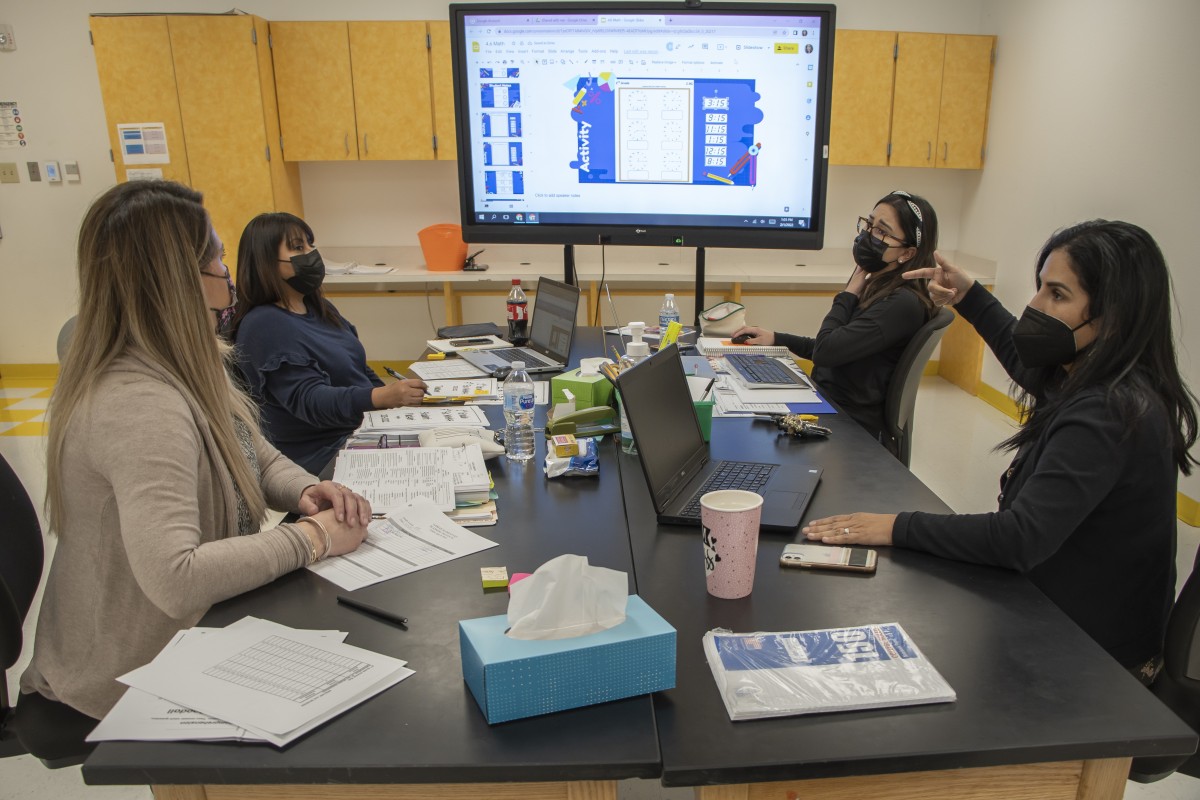How One Texas District is Using COVID-19 Relief Funds to Change Its Approach to Effective Instruction
April 26, 2022

All too often, we hear that students who missed critical learning will catch up in summer school, Saturday camp, or after-school tutoring. "We need more students to get it the first time it's taught," said Aida Gomez, chief instructional officer at San Felipe Del Rio Consolidated Independent School District in Texas. "Instruction in our buildings needed to change to make that happen."
Gomez leads instructional practice in San Felipe Del Rio, a district located about three hours west of San Antonio near the border of Texas and Mexico. The district serves about 10,000 students, more than 90% of whom are Hispanic and roughly 70% are economically disadvantaged. About two years ago, San Felipe Del Rio renewed its focus on high-quality instruction to strengthen the quality of daily classroom teaching.
To start, the district completely revamped its schedule to include concentrated three-hour learning blocks for teachers each week and adopted a 10-day cycle for instructional improvement. During the learning blocks, teachers meet in small groups that are led by a trained administrator or teacher leader. The groups follow a protocol to diagnose where students are on the path to grade-level learning, identify content and skills that each student needs to master, plan lessons that anticipate where students might struggle, deliver instruction with support to address those needs, and monitor student progress to identify next steps.
"The planning period allows for strong teachers in a given subject to build capacity within the team by sharing what has worked in their classroom," said Alma Cavazos, a fifth grade teacher at Lamar Elementary School. "The facilitator also supports team members to practice parts of their lesson while others play the role of students."
This redesign was fueled by a state grant under the Resilient Schools Support Program (RSSP), which was created through federal COVID-19 relief funds by the Texas Education Agency (TEA) to offer school districts new resources to build resilience in their school communities amid the pandemic. TEA approved NIET as an official technical assistance provider for the program, and during the 2020-2021 school year, NIET specialists supported and coached leaders across four districts through self-assessments, goal setting, support cycles with targeted improvement strategies, and an intensive analysis of results to drive next steps.
"We started with an intensive focus on in-classroom change and supplemented that with outside the classroom support for students with the greatest needs," said Superintendent Dr. Carlos Rios. "Our belief was that if teachers learn the curriculum, they can implement it at a deeper level and plan for the supports or strategies they will need to support lower performing students to access the lesson the first time." Prioritizing the use of high-quality instructional materials and providing training for teachers to use those materials effectively is one of three learning acceleration strategies from NIET’s latest policy paper, Accelerating Student Learning Through Prioritizing Teacher Support. San Felipe Del Rio is using this strategy to support teachers in maximizing their curriculum to meet the needs of all of their students.
By creating extended time for teacher collaborative learning, establishing teacher leadership roles, providing professional learning for school leaders, and supporting principals through district coaching, San Felipe Del Rio has created systems and structures that build capacity in teachers to grow students. The new approach is showing signs of success. For example, the district reported a 23% decrease in the number of students in the highest need intervention tier (TIER 3) from the beginning of the 2021-22 school year to the middle of the year based on data from the Texas Primary Reading Inventory assessment.
Although these changes were made in response to learning disruption caused by the pandemic, San Felipe Del Rio plans to sustain these systems and structures moving forward. That will equip them to strengthen educator effectiveness and improve student outcomes for years to come.